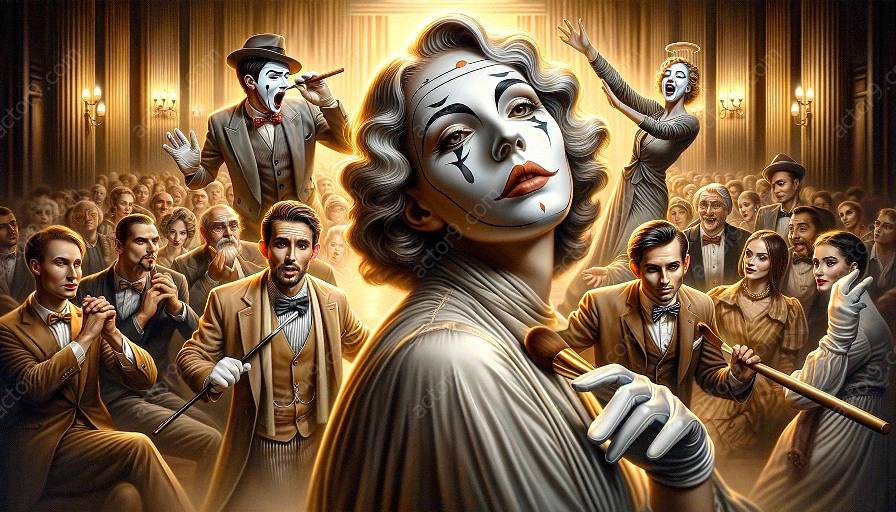In the art of mime and physical comedy, improvisation plays a significant role in enhancing the performance and connecting with the audience. Famous mime artists and physical comedians have mastered the art of improvisation, bringing humor, expression, and storytelling to life through their performances.
Mime and Physical Comedy
Mime and physical comedy are performing arts that rely on non-verbal expression and physical movement to entertain and convey emotions and stories. Both art forms require a high level of physical control, precise gestures, and facial expressions to communicate with the audience effectively.
The Role of Improvisation
Improvisation in mime and physical comedy is the spontaneous creation of movement, gestures, and expressions without a scripted dialogue. It allows performers to adapt to unexpected situations, engage with the audience, and create memorable moments through their spontaneity and creativity.
Enhancing Performance
Improvisation adds an element of surprise and unpredictability to mime and physical comedy performances, keeping the audience engaged and entertained. It allows performers to respond to the energy of the audience and create unique interactions that resonate with the spectators.
Expressing Emotions
Through improvisation, mime artists and physical comedians showcase a wide range of emotions, from joy and humor to surprise and empathy. They use improvisational skills to connect with the audience on a deeper level and evoke genuine emotional responses through their performances.
Storytelling and Creativity
Improvisation enhances the storytelling aspect of mime and physical comedy, allowing performers to create spontaneous narratives and characters. It encourages imaginative exploration and inventive play, leading to the development of original and captivating performances.
Famous Mime Artists and Physical Comedians
Several renowned artists have made significant contributions to the world of mime and physical comedy through their innovative use of improvisation and storytelling. Some of the famous names include:
- Marcel Marceau: Widely regarded as one of the greatest mime artists, Marceau was known for his masterful use of improvisation to convey complex emotions and narratives through his performances, such as his iconic character Bip.
- Charlie Chaplin: A legendary figure in physical comedy, Chaplin's iconic silent films and performances showcased his remarkable improvisational skills, as he brought humor and social commentary to life through his physicality and expressions.
- Rowan Atkinson: Best known for his portrayal of the character Mr. Bean, Atkinson demonstrated exceptional improvisational talent, utilizing physical comedy to create hilarious and memorable moments without the need for spoken dialogue.
- Buster Keaton: A pioneering figure in silent film comedy, Keaton's precise physical performances and daring stunts highlighted his extraordinary improvisational abilities, captivating audiences with his inventive humor and daring feats.
Conclusion
Improvisation is a fundamental element in the art of mime and physical comedy, allowing performers to infuse their work with spontaneity, emotion, and creativity. Famous mime artists and physical comedians have exemplified the power of improvisation through their legendary performances, captivating audiences with their unparalleled ability to express, entertain, and innovate.


























